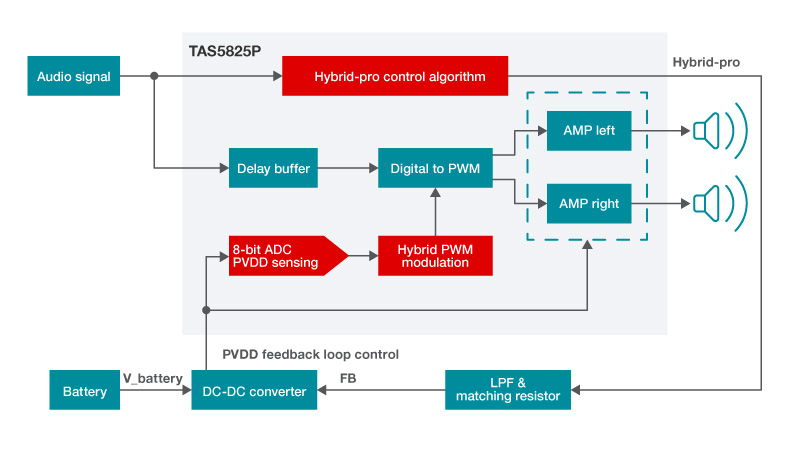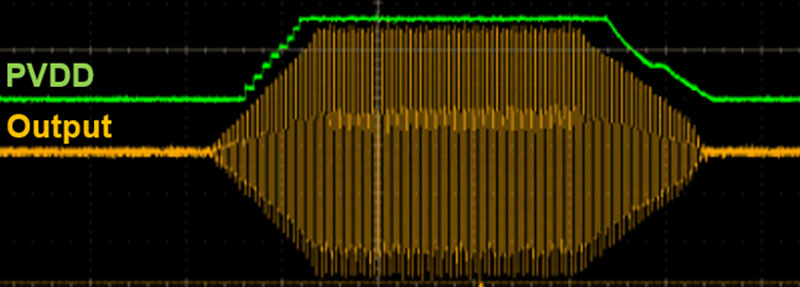SSZT215 December 2020 TAS5825P
Have you ever thought that an integrated digital signal processor (DSP) in an audio amplifier was only used for digital filters, equalization or audio mixing? The reality is that DSPs integrated in modern audio amplifiers bring much more to the party, including increasing both amplifier and audio system efficiency.
Battery-powered speakers continue to be one of the most convenient ways to consume audio inside, outside, or wherever your music takes you. In this article, I’ll discuss how audio amplifiers with integrated DSPs can increase a speaker’s efficiency and run time.
“But how long will the battery last?”
Without the flexibility of increasing battery capacity, the question for designers becomes, “how do I get more playback out of the same capacity battery?” The answer is efficiency. For audio applications, the most efficient amplifier option for mid to high power (think >10 W) remains Class-D amplifiers, with theoretical 100% efficiency (>90% in practice).
Although >90% efficiency is the benchmark, it is almost always measured in a lab, with a constant input signal and output power. In practice, and with a typical audio clip or song, the measured efficiency of an amplifier changes constantly based on the output power being delivered. This is because at lower output power, the ratio of power lost as heat in the amplifier’s metal-oxide semiconductor field-effect transistor increases. To reduce these idle losses, the simplest solution is to lower the power supply’s voltage. For audio, designers might be reluctant to do this, as lowering the supply voltage can decrease the system’s ability to deliver higher output power, especially peak power for higher dynamic ranges.
The solution to battery life for mid- to high-power speakers
 Figure 1 TAS5825P block diagram
Figure 1 TAS5825P block diagramThe hybrid-pro idea is simple, and is synonymous with ways that we attempt to save energy at home or at work. For example, when you’re not using a light in a room, you’ll just turn it off to lower your electricity bill. However, with audio amplifiers, you don’t want to just turn the music off! To make a more accurate comparison, think of hybrid-pro as an automatic light dimmer. Instead of turning the light (audio amplifier) off, the light sensor automatically dims the light for just the right amount of light needed at the time (the supply voltage of the amplifier). Figure 2 illustrates this concept, where the supply voltage for the amplifier (PVDD) increases as the output voltage required increases.
 Figure 2 TAS5825P hybrid-pro envelope tracking
Figure 2 TAS5825P hybrid-pro envelope trackingRunning tests with hybrid-pro enabled yield impressive results for battery-powered speaker run times. Compared to a typical amplifier with a fixed voltage rail, the TAS5825P configured in hybrid-pro mode can increase battery life by over 20%. Furthermore, the adjustable audio look-ahead buffer in the TAS5825P provides advanced voltage-rail control without any risk of audio clipping.
While DSPs have traditionally only been used for equalization and audio filtering, the benefits of an integrated DSP in an audio amplifier have never been greater. Our portfolio of Class-D audio amplifiers with integrated DSPs continue to push the envelope and bring system-level efficiency to the table. Read more about using DSPs to process voice commands.